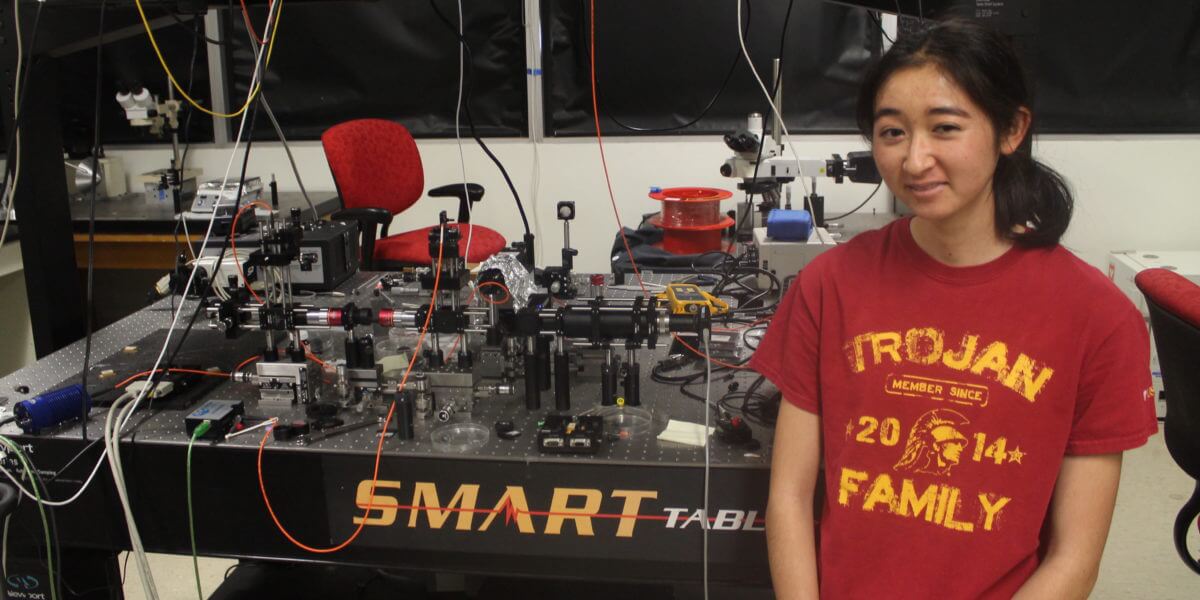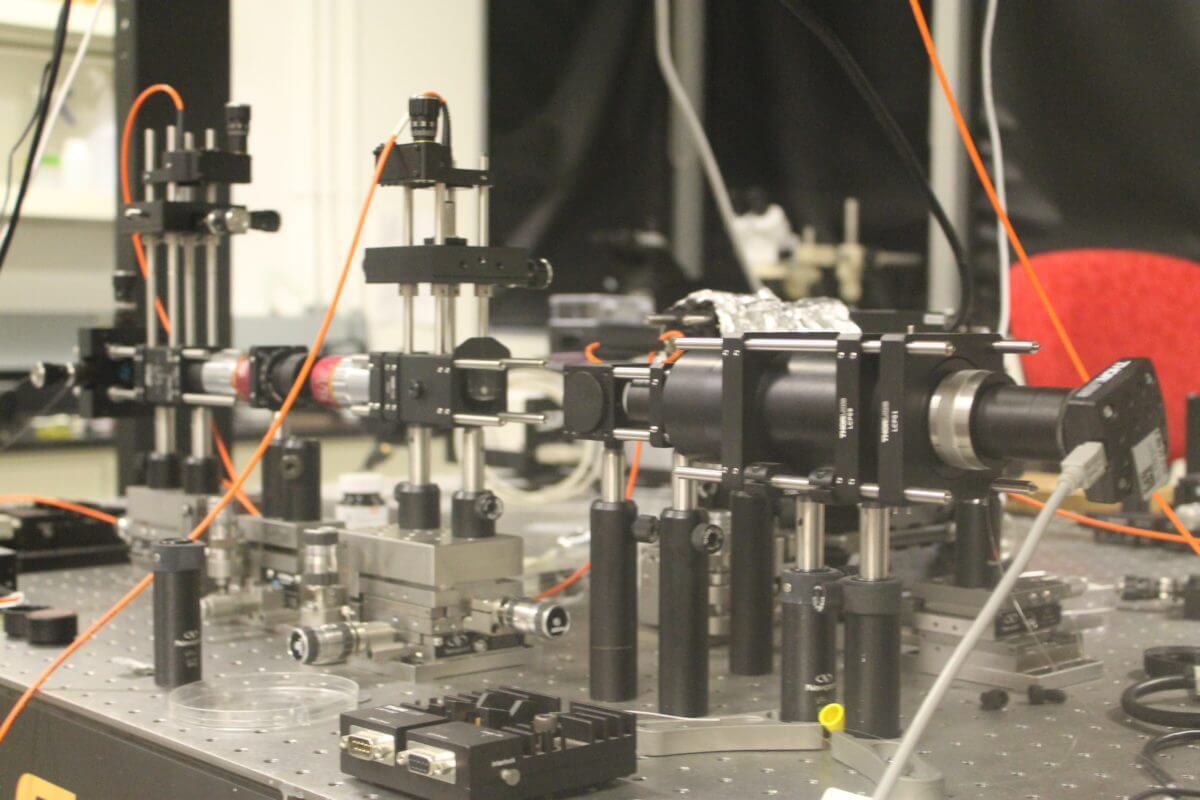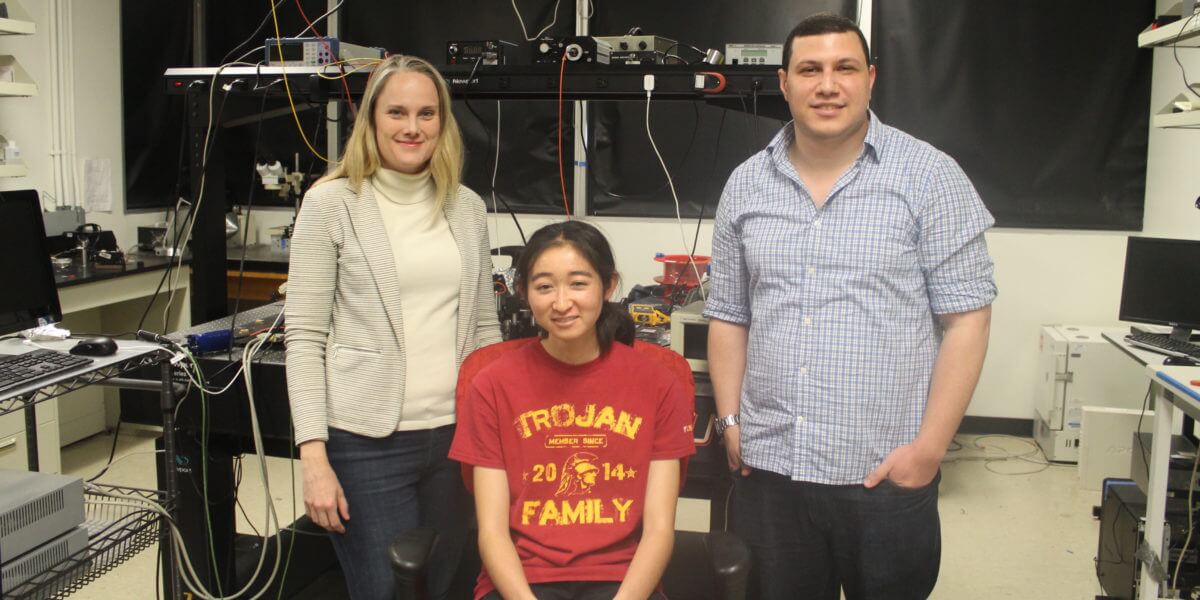
By Elise Uyehara
Four years ago, as a freshman at USC, the prospect of pursuing a PhD would have struck me as a funny joke. I grew up in Hawaii in an engineering household (my dad is electrical and my mom mechanical) so naturally, I developed a premature aversion to robotics, math league, and anything else I labeled a “pre-engineering activity.” Instead, I devoted my energy to cross-country and track until my senior year of high school, when I was forced to confront the reality of the limited career options in recreational running. Upon graduation, I entered USC in mechanical engineering, with ambitious plans to earn a bachelors degree, secure an industry job in Hawaii, and move out of my parent’s house before the age of 40.
But in my second year, I saw the light, in the form of the electromagnetic wave equation, emerging in my PHYS 162 class from a subtle manipulation of Maxwell’s equations. I had a series of revelations that semester. I found that vector operators like the divergence and curl did not dissipate in the heat outside of a calculus 3 classroom, but rather attained physical meaning through their expression of the electric and magnetic fields. Further, I learned that electricity and magnetism were not separate entities rudely lumped into the same chapter of high school physics textbooks, but fields inherently intertwined through special relativity. Most importantly, I discovered the engineering capabilities – paper-thin battery substitutes, waveguides that propagate electromagnetic energy, metamaterials that manipulate light – that could be unlocked with a fluency in the theory and the math of electromagnetics. However, that vein of engineering straddled the border of applied physics and required a PhD.
"I’ll always remember USC as the place where I first discovered my love of physics, and through the mentorship of several individuals, developed the skills and confidence to pursue a PhD in Electrophysics."
With this epiphany, I began my transition to the PhD track with a physics minor. My parents approved the minor with one condition: “You can do whatever you like as long as you get that engineering degree.” I was still unsatisfied though because I enjoyed my physics classes more than my major classes. The resolution to my predicament arrived through my accidental discovery of the electrophysics wing of the electrical engineering department the following semester. I immediately knew I’d stumbled upon a brilliant loophole in my parents’ terms! With the help of Dr. Bickers, who teaches the PHYS 161, 162, 163 series, I joined the Povinelli Nanophotonics Lab that summer and switched to electrical engineering the very same week.
In Dr. Povinelli’s lab, under the guidance of graduate student Ahmed Morsy, I developed a process for assembling a photonic crystal membrane (for my project, a 125 um diameter, 340 nm thick silicon slab micro-patterned with an array of holes) onto the tip of an optical fiber. When connected to a laser, the optical fiber guides light to the photonic crystal, which alters the laser spectrum to exhibit resonances, or high-intensity peaks, at specified frequencies in the measured transmission spectrum. These resonances can then be used in applications such as sensing, nano-heating, and particle trapping. Implemented on an optical fiber tip, photonic crystals benefit from increased mobility, extending their field of application to more extreme environments, such as in living organisms. My project goal is to assemble a nano-heating photonic crystal on the tip of an optical fiber for portable nano-heating.

Free-space optical set-up for transmission measurements, used by Elise for optical characterization of samples. Photo Credit: USC Viterbi
Adjusting to undergraduate research, especially in a new major, was not an easy process for me. My greatest frustration was my limited background in the new material, which often made troubleshooting difficult when things didn’t work. Trying to teach myself through jargon-riddled photonics articles was challenging, as there was too high of an impedance mismatch for effective transmission of information. Fortunately, since first joining the lab, I’ve had the opportunity to take 3 electromagnetics classes with Dr. Aluizio Prata: EE 330, EE 470, EE 570 A. Through these classes, I built a solid foundation in the basic theory, developed the math skills for handling electromagnetics, applied the theory to engineering problems, and progressed to the graduate level of modeling and solving problems of increasing complexity.
By the time the Fall 2018 PhD application cycle rolled around, I was already set on applying. When the acceptances came out and I found myself faced with a decision, I remembered my original freshman plans and panicked. Thanks to the patience of my mentors in the electrical engineering department I finally decided, after an unnecessarily long and painful decision process, to attend MIT in the fall. I have not yet chosen a lab, but my research interests include photonics, nanomaterials, energy harvesting, and applied electromagnetics. As I transition to MIT’s PhD program, I look forward to taking graduate classes in optics, quantum mechanics, and solid-state physics, as well as gaining access to MIT’s lab equipment. Nonetheless, I’ll always remember USC as the place where I first discovered my love of physics, and through the unforeseen mentorship of several individuals at USC, developed the skills and confidence to pursue a PhD in electrophysics.
Looking back two years ago when I first switched to EE, I was inspired by the quote from John Stewart Mill: “Try thyself unweariedly till thou findest the highest thing thou art capable of doing, faculties and outward circumstances being both duly considered, and then do it.” Two years later, as I prepare to graduate from USC, I should add a somewhat less eloquent but equally relevant quote from Ross Mukai, my former cross-country coach at Hawaii Baptist Academy: “You’re not going to roll over and die once things start to get hard. So get up and keep running!”
Elise Uyehara is graduating this month from the Ming Hsieh Department of Electrical Engineering. She will begin a PhD in Electrophysics at MIT in the Fall.

Elise with Dr. Michelle Povinelli (left) and PhD student/mentor Ahmed Morsy in Dr. Povinelli's lab. Photo Credit: USC Viterbi
Published on May 4th, 2018
Last updated on March 30th, 2021

